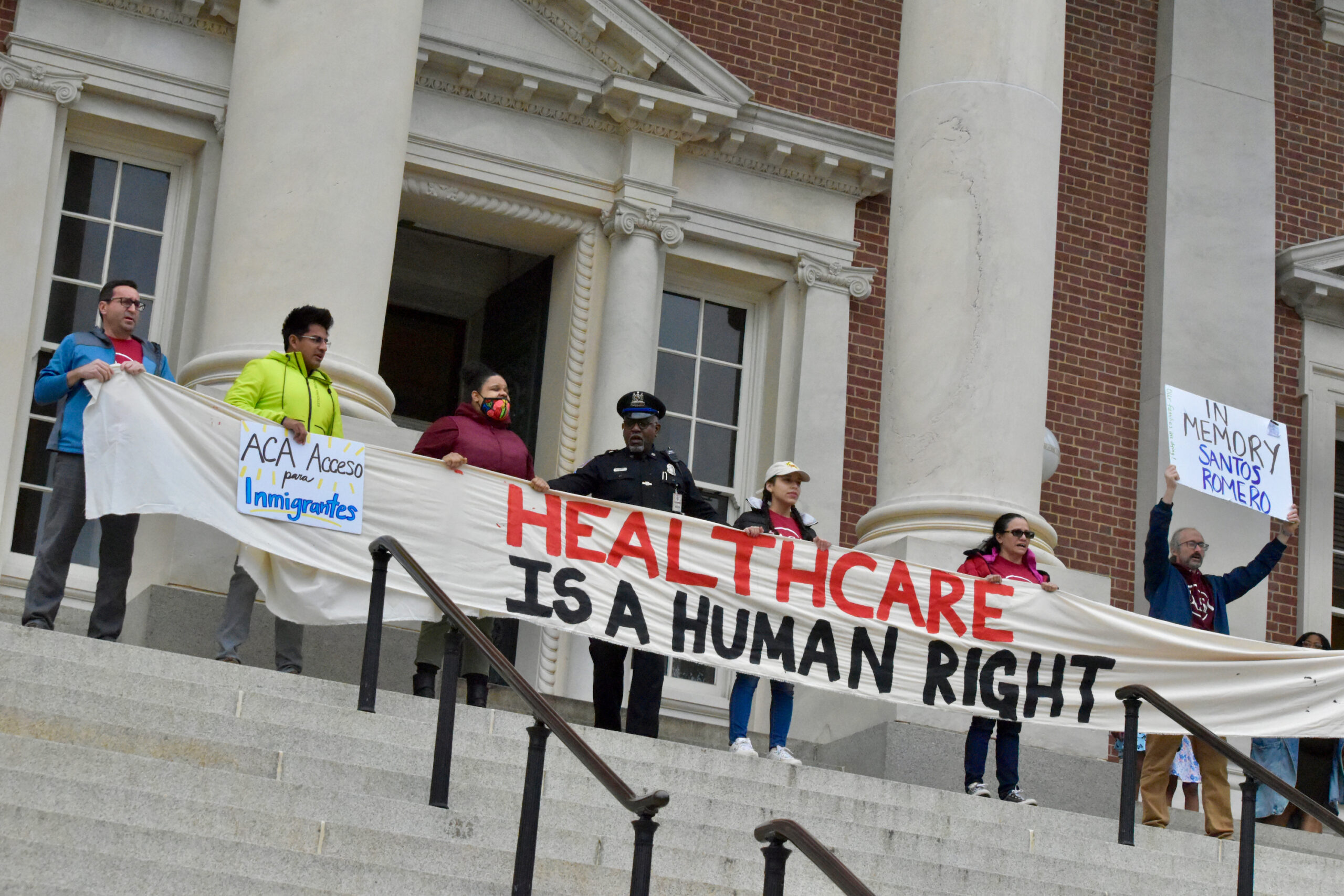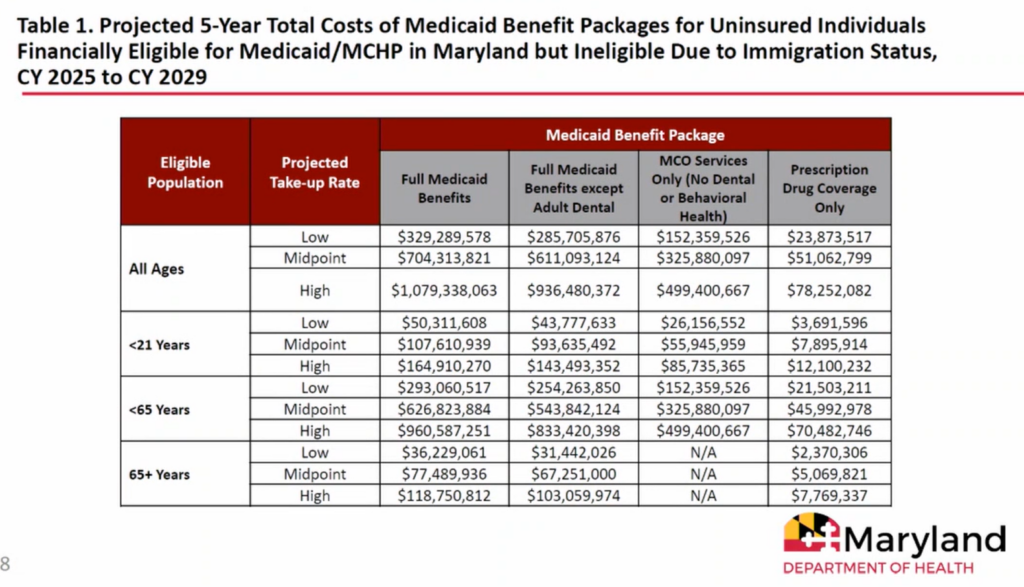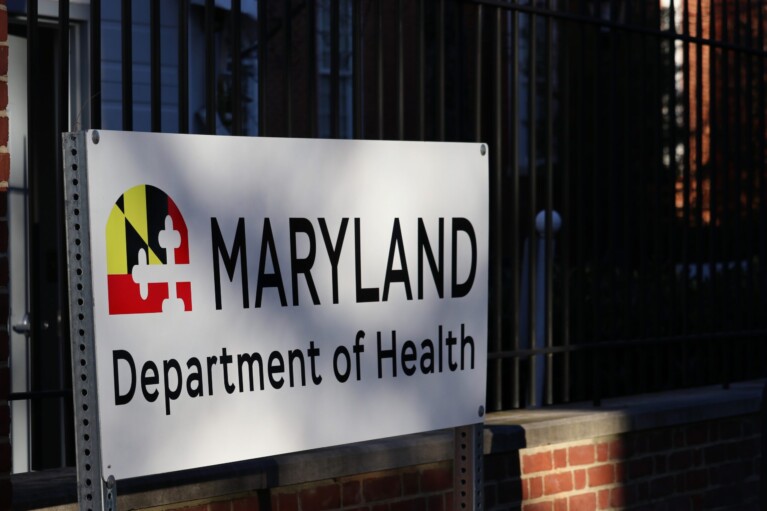Delegates evaluate estimated costs of providing health care coverage for undocumented residents

Ahead of a challenging budget year, Maryland lawmakers evaluated the potential costs and savings of expanding health care benefits to residents that do not have access to coverage.
Much of the discussion at a House Health and Government Operations Committee meeting Tuesday involved how much it might cost Maryland taxpayers to provide health care coverage to the state’s undocumented populations. It could require millions or even a billion dollars in state funding, according to Maryland health department analysts. A separate analysis by a health care advocacy group suggests that the state could also save millions in the long run when it reduces the uninsured rate.
The two reports provided to the Health and Government Operations committee will likely inform how the General Assembly, which convenes Jan. 10, approaches the topic.
The analysis regarding health care coverage for undocumented residents is a result of legislation from the 2023 session, prompting the Maryland Department of Health produce a report comparing potential options for health care coverage of individuals ineligible for Medicaid and other health care assistance programs due to their immigration status.
Ryan Moran, deputy secretary for health care financing with the Maryland Department of Health, said there are approximately 112,400 people who are uninsured in Maryland and ineligible for Medicaid or a Qualified Health Plan due to immigration status. They account for 30% of Maryland’s uninsured population.
The report provides potential costs for several health care coverage options and a breakdown of what costs might be if those offered coverage were all undocumented residents or all fell within a certain age group: all younger than 21 years, all younger than 65 years, or all older than 65 years.
If Maryland were to invest state funds into providing full coverage to all undocumented residents, and a majority of the undocumented residents participate in coverage, the projected costs would be $1 billion over a five-year period.
However, if the state decided to only cover prescription drug costs for undocumented residents of all ages, and a majority participated, the projected costs would be about $78 million for the state over five years.

Maryland Department of Health provided cost projections state expansion of health care coverage to undocumented residents. Courtesy of the Maryland Department of Health
Moran noted that there are some considerations for implementation if lawmakers move forward with expanding coverage for undocumented residents.
He said the General Assembly should consider these costs as “state-only dollars,” as there would be few opportunities for the federal government to assist with costs. This is due to limitations on federal health care dollars going towards undocumented recipients.
He noted that there might be federal dollars available to cover emergency services only, but the Maryland Health Department might need approval from the Centers for Medicare and Medicaid Services. He also said there might be additional implementation costs outside of those estimates.
Michele Eberle, executive director of the Maryland Health Benefit Exchange, the state’s health insurance marketplace, presented additional cost projections if undocumented residents were to receive health care coverage through a Qualified Healthcare Plan benefit package, which are state-approved health care plans that cover essential health benefits.
In those projections, if health care coverage was provided to just low-income undocumented immigrants who would qualify for Medicaid if it weren’t for their immigration status, then projected costs for the state could be around $922 million dollars over the course of five years.
Eberle reminded the committee that the cost projections are based on U.S. Census estimates of undocumented residents, and that it’s not clear how many individuals would participate in the health care coverage if it were expanded to that group.
Moran said that the Department of Health recommends incremental expansions to covering undocumented individuals, if lawmakers move forward on the effort.
“That would allow the state with the ability to have more predictable enrollment and expenditure periods over time, and would allow us to really analyze take-up rates,” he said.
Some Republican lawmakers were concerned about the cost of the proposal.
“Is this saying that taxpayers will need to spend over one billion dollars, am I reading that chart correctly?” Del. Kathy Szeliga (R-Baltimore County), asked Moran.
She was referring to projected costs for the most generous health care plan coverage that would cover most undocumented residents.
“Yes, that’s right. Over the five year period…about $200 million per year,” Moran responded.
Committee Chair Joseline Peña-Melnyk (D-Anne Arundel and Prince George’s) asked Moran about the importance of expanding health care coverage.
“I view it as the most important safeguard to allowing individuals, regardless of your life circumstance, to achieve your full optimal health status,” Moran responded.
Furthering the conversation, Vincent DeMarco with the Maryland Health Care for All Coalition provided an overview of a recent data analysis which determined that decreasing the uninsured rate may have saved the state some $460 million over 14 years.
From 2008 to 2023, Maryland’s uninsured rate decreased from 13% to 6%. DeMarco urged lawmakers to keep the momentum going for additional savings.
“We should not rest on our laurels,” DeMarco told the committee. “We did so much good for all of us going from 13% to 6%. Now let’s get from 6% to 0%.”
The analysis was conducted by a former director of the Maryland Health Services Cost Review Commission, Steve Ports, at the request of Maryland Health Care for All. The new report looks at costs hospitals incurred when they provided care to people without insurance who could not otherwise pay for care, referred to as “uncompensated care costs.”
The data set suggests that since 2008, with the passage of the Affordable Care Act and Maryland’s Medicaid expansion over the years, the uninsurance rate among Marylanders has reduced from 13% to 6% and helped the state to save millions by reducing the amount of uncompensated care costs.
The report found that since 2007, “the combined percentage of uncompensated care in Maryland hospital rates and related hospital rate assessments has been reduced, equating to at least $460 million in savings.”
“While we cannot assume that the major health care reforms outlined in the study are the only factors impacting hospital uncompensated care, the trends… show that they certainly represent an impact,” according to the analysis.
“Covering everybody that’s left, including [people who are] undocumented, will be great for all of us,” he told Maryland Matters.




 Creative Commons Attribution
Creative Commons Attribution